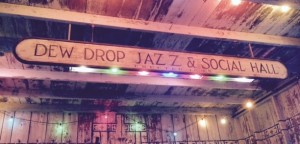 I can’t imagine a world without music. Luckily, I don’t have to, especially in southern Louisiana. Music season is all year round of course, but certain times of the year there’s an explosion of events and gatherings built around live music. Music melts boundaries, builds friendships, grows romance, and is generally what is right about the world.
I can’t imagine a world without music. Luckily, I don’t have to, especially in southern Louisiana. Music season is all year round of course, but certain times of the year there’s an explosion of events and gatherings built around live music. Music melts boundaries, builds friendships, grows romance, and is generally what is right about the world.
Music is being in harmony, being in sync. Music releases tensions, brings smiles, gives hope, and builds bridges of unspoken communication. The ultimate Cahoots train. All aboard!
If I sound over the top in praise of music’s ability to bring us together, it’s because I find myself repeatedly in the position of being consumed in its magic.
Last week, The Dew Drop Jazz and Social Hall in Old Mandeville, Louisiana opened its doors once more for the fall season of concerts. Concerts can be held only in the fall and spring because the 1895 wooden structure has no heating or air conditioning. Personally, I hope it never has. A couple of times a month, the old cypress hall with eight-foot tall window openings but no windows, and multi-colored lights strung from the ceiling, its only lighting, hosts some of the absolute best musicians around. They play to a crowd who are there because they love the music. Some dance on the wooden floor, and all are rapt. The atmosphere is indescribably delicious in its communal absorption in the moment, in the beauty, in the beat, and in the universal language. The audience and the musicians are in intimate exchange, almost inseparable from one another.
It was obvious last Friday that when Don Vappie, his banjo, and the rest of the Creole Jazz Serenaders played, they weren’t simply doing a job, they were making love—to their instruments, to the music, and to the audience who loved them back. Who can deny that this, and not the hokey pokey, is what it’s all about?
Even if we can’t ourselves make music or can’t dance, we can still open ourselves to the harmony and magic.
